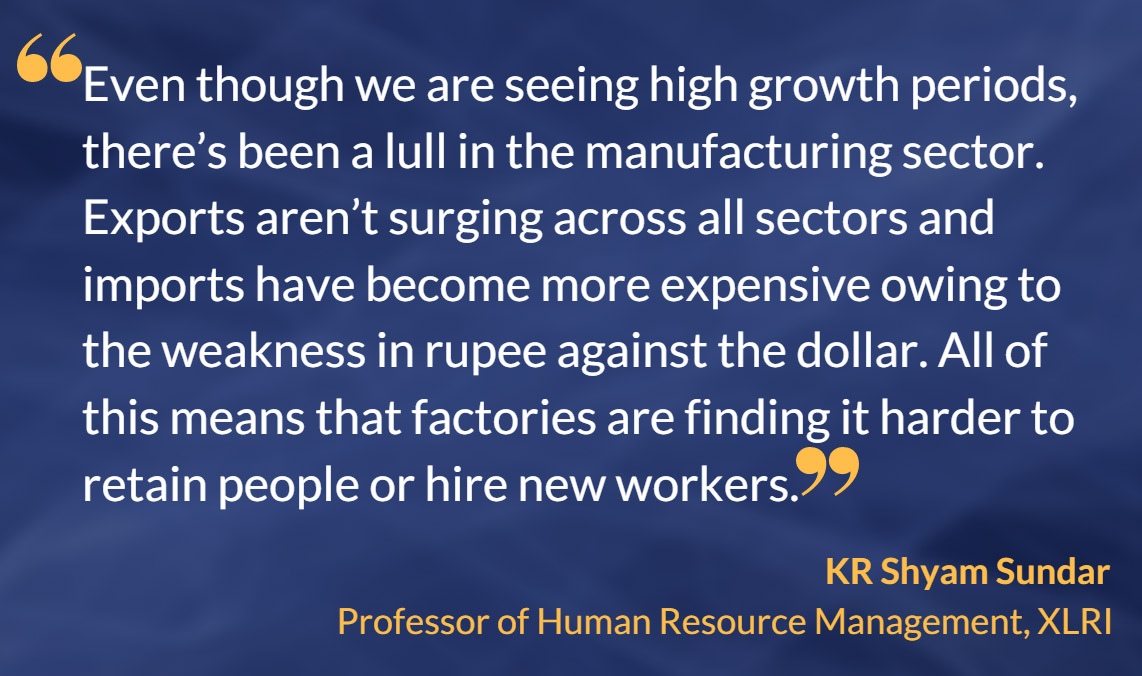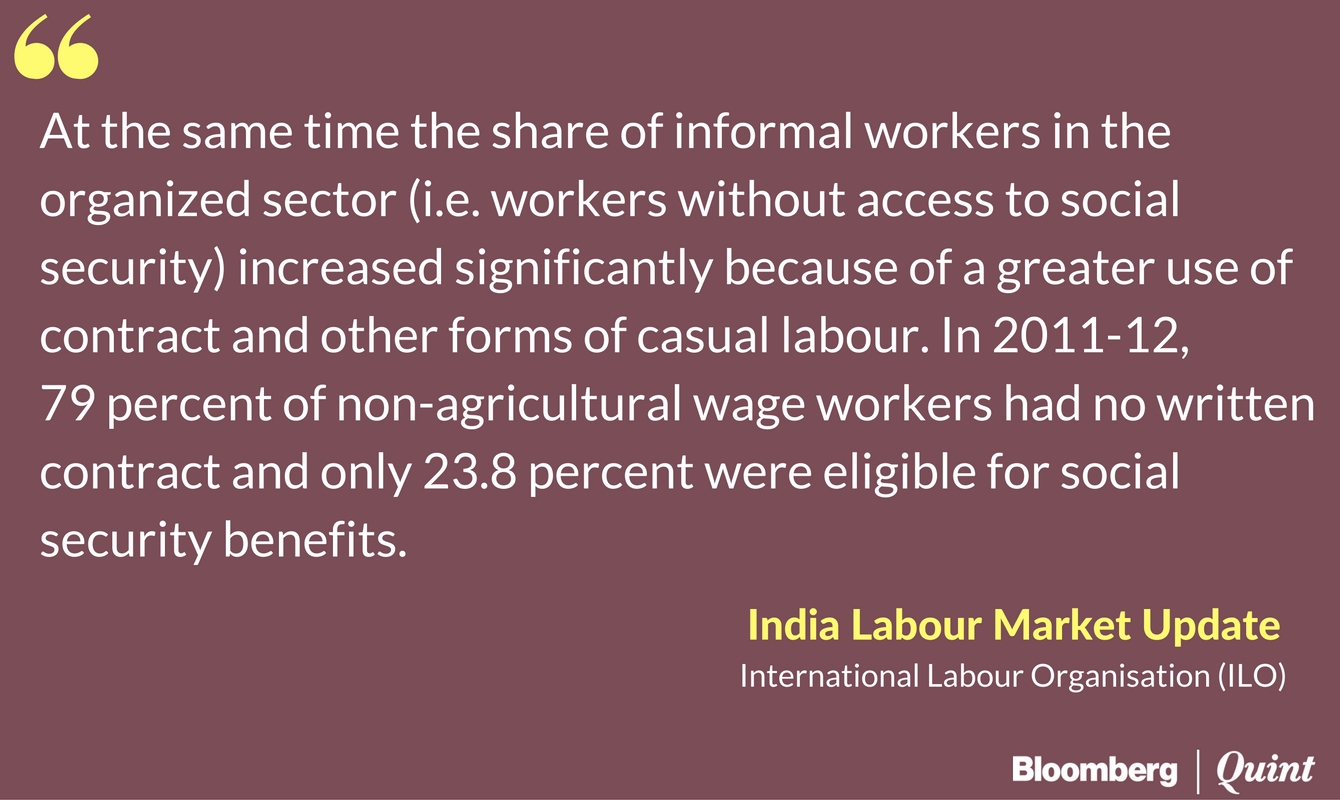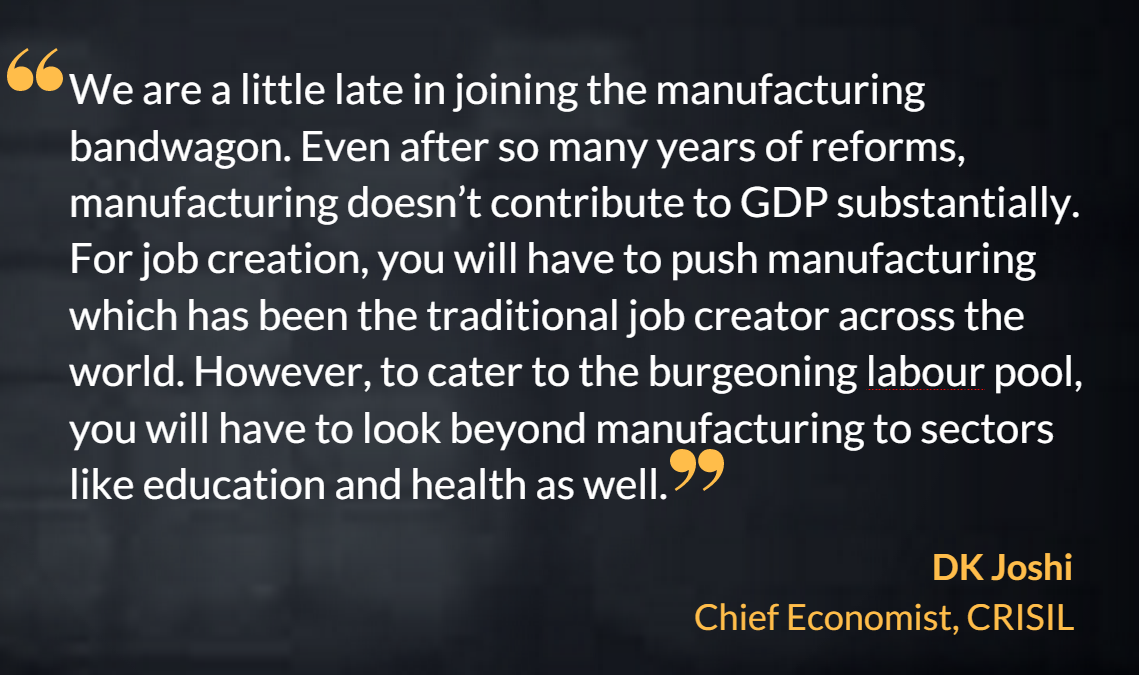


India may be the fastest growing major economy in the world but that may mean little to the country’s 127 crore people, many of whom continue to struggle to find the right kind of jobs.
India’s unemployment rate stood at 5 percent in 2015-16 compared to 3.8 percent in 2012-13, according to the fifth annual survey of employment-unemployment published by ministry of labour and employment. At first glance, that seems like a reasonable unemployment rate for a country the size of India. However, a separate quarterly survey conducted by the government on jobs being created in key sectors tells a different story.
For a country where 1.2 crore people enter the workforce each year, the pace of job creation remains far below what is needed even though the economy is growing at over 7 percent.
Across eight key employment generating sectors, only 1.35 lakh jobs were added in calendar year 2015, quarterly surveys of employment showed. In other words, jobs created were equal to only 1 percent of the addition to workforce. These sectors include textiles including apparels, leather, metals, automobiles, gems & jewellery, transport, information technology and handlooms.

As seen from the above chart, the pace of job creation appears to have steadily fallen from a high of 9.3 lakh in 2011. This is despite the fact that GDP growth has picked up over this period.

According to KR Shyam Sundar, professor of human resource management at Xavier Labour Research Institute, official statistics don’t necessarily reflect the on-ground situation across India’s factories where jobs are being cut due to multiple factors.


Before he came to power, Prime Minister Narendra Modi promised to create one crore jobs to eradicate youth unemployment in the country. More than halfway through his term, only five lakh jobs have been added according to the official labour bureau data.
Sundar said that the government will find it tough to create jobs if it doesn’t put the basics in place. One of these is having a national employment policy which can clearly lay out the path to creating jobs, he said.
“We don’t have an employment policy which is a requirement for all the International Labour Organisation member countries. The government has mainly relied on information technology and special economic zones to create jobs but the real potential lies somewhere else,” he said.


The number of jobs being created is not the only problem. The nature of employment opportunities is equally a cause of concern.
One third of the workforce is employed as casual labour while just 17 percent of the people are working in the organised sector as salary earners, the 5th annual survey for 2015-16 showed.
This implies that a bulk of the population gets employed on a contractual basis and, hence, is denied any social security benefits.

The ILO further added in its labour market update that figures from major agricultural operations showed a rapid growth in wages from the levels seen in the early 2000s. This, however, doesn’t seem to have translated into more income at a family level. Two-thirds of all working households survive on less than Rs 10,000 a month.
XLRI's Sundar said that the real reason is that there’s a lot of disguised unemployment as well as underemployment which means that people end up working for wages below what they deserve.
DK Joshi, chief economist at Crisil, attributes underemployment to the lack of job growth in the formal sector.
The unstable and informal nature of the bulk of jobs in the country is clear from the data that the government puts out every year. Only 60 percent of the workforce managed to find work for a full year while 35 percent worked only for six to eleven months, according to labour bureau data released as part of the fifth annual survey.

“If you look at the formal employment sectors, the government jobs are reducing instead of rising and the private companies are also not adding jobs fast enough. This means that people remain locked in with agriculture and other informal employment where they don’t get social security benefits,” Joshi said.
The fear is that the jobs scenario may only worsen in the years ahead.
Recently, the World Bank predicted that automation threatens 69 percent of the jobs in India. Joshi said that India hasn’t exactly succeeded in generating a lot of jobs in the manufacturing sector and now automation threatens to take away jobs. Furthermore, now is the time to focus on other labour intensive sectors as well because of predicted job losses, he said.


With lakhs of young people joining the job hunt each year, India needs to create much more jobs. Else, the so-called demographic dividend threatens to become a demographic burden.